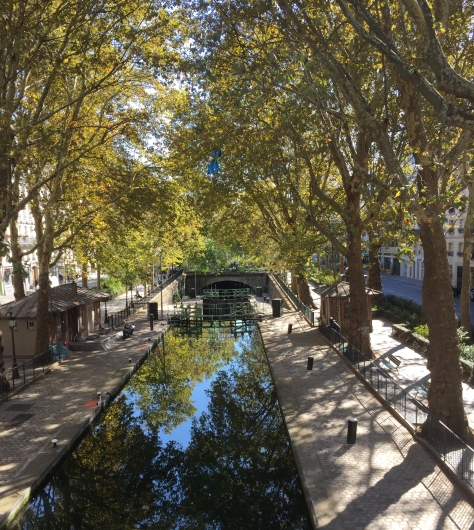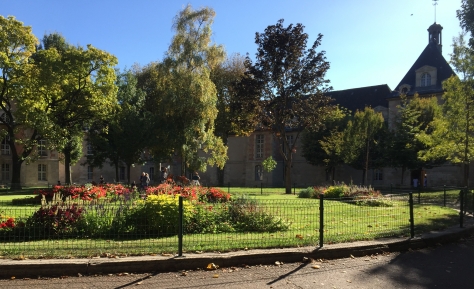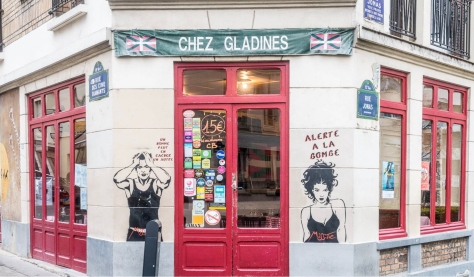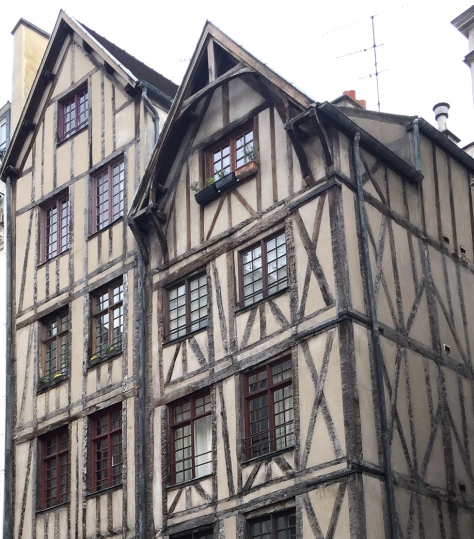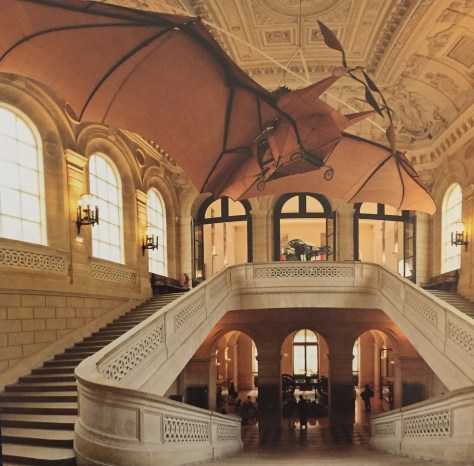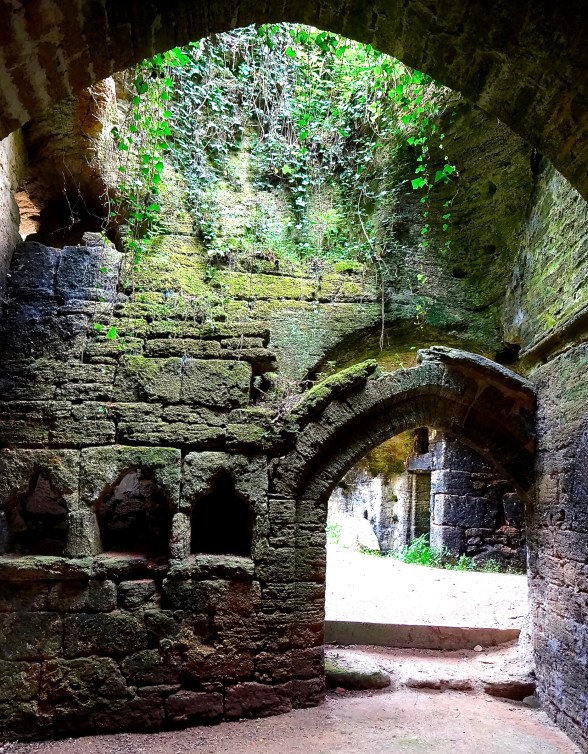One day when summer was in its full bloom and Paris was but a dream, a book friend indicated — quite emphatically, as I now recall — while pointing to The Hare with Amber Eyes, by Edmund de Waal, that it was an excellent book. “You should read it,” he said. “Really … it’s a great book.”
“Oh, fine,” I said, reluctantly. It’s a memoir, you see, and not my typical cup of tea. Nonetheless, I grabbed the copy from the bookshop shelf and took it home, where it sat for several weeks. I began to imagine the tiny hare on the cover staring at me reproachfully each time I passed.
When I finally picked it up and began, I found that my book connoisseur friend was correct — it was well written and extremely engaging.
It’s a story about a collection of netsuke bought in Paris in the 1870s by Charles Ephrussi, a cousin of the author’s great-grandfather. The book relates the story of these beautiful art objects and the events occurring around them throughout their travels — from Japan to Paris, Vienna, Tokyo, and London, where they eventually wind up in the possession of Mr. de Waal.
As you read, you get a sense that Mr. de Waal lived among stories — great and tragic ones. He weaves a strong visual tale of these tiny figures — ivory, horn, boxwood — delicately and intricately carved by Japanese artisans and initially collected by Charles.
As an artist himself, Mr. de Waal has a visual capacity to capture the essence of the past beautifully, so the reader is easily able to “see” the places, the rooms, the people, the netsuke, as they move through time.
While the lives of the netsukes began in Edo (pre-Tokyo), they enter this story in Paris, in Charles Ephrussi’s study overlooking the rue de Monceau, kept in a black polished wood vitrine lined with dark green velvet and reflected in the mirrored backing.
With this story resonating in my mind, I thought it would be interesting to see the places in Paris where Charles lived, and the sites that Mr. de Waal visited in his quest to track the history of the netsuke collection.
So we begin where Charles lived after his arrival in Paris from Vienna in 1870, the Hôtel Ephrussi, the family’s home, at 81 rue de Monceau.
Parc Monceau
We arrive at the Parc Monceau and walk through its lovely grounds, stopping occasionally to enjoy the autumn flowers, fantastic variety of trees and beautiful art and installations that make this park unique.
The park was established in the 18th century at the request of the Duke of Chartres, cousin to King Louis XVI. It was unconventional in its tastes at the time with its many conflicting architectural features.
Charles was 21 when he arrived in Paris. By that time, the park was undergoing a transformation by Baron Haussmann, opening to the public in 1861.
The Hôtel Ephrussi
Rue de Monceau is south of the park and we find #81 near the top of the hill. It’s an impressive building, five stories high, with five windows across. Four Corinthian pilasters add a Neo-Classical feel to the façade. Stone urns sit atop the parapet, and the Ephrussi family’s double-Es are still present in the metal grilles over the street windows.
We look up at the second floor windows and envision Charles’ suite of rooms: an antechamber, two salons — one which became his study — a dining room, two bedrooms and a petite chambre.
It’s a neighborhood of very impressive homes, once owned by well-known families.
With command of a number of languages, a great amount of money and his freedom, Charles spent a good deal of time traveling during his 20s. During his travels, he became a collector — drawings, tapestries, enamels, sculptures and furniture.
Musée Nissim de Camondo
To get a better sense of Charles and how he lived, Mr. de Waal visited the Musée Nissim de Camondo to view the contemporaneous furnishings in this Museum of Decorative Arts.
We, too, visit this museum.
We’ve come to see the furnishings of the main house, particularly those in the two drawing rooms.
The furniture throughout this beautiful home turned museum has been crafted by artisans who worked for the king and other wealthy clients. Through it, we get a feel for how Charles’ apartment would have been furnished.
Meanwhile in Charles’ life, he begins to write a book about Albert Dürer, while also writing for the Gazette des beaux-arts.
The Gazette has a reputation as an essential part of society life in Paris. For Charles, it’s “a calling card into those places where society and art intersect.” He’s invited to important salons where he meets poets, playwrights, painters — he begins to find a life for himself in Paris.
Mr. de Waal finds that life reflected in the social columns of the day, with Charles and his brothers recorded attending Parisian balls, musical soirées, operas, and receptions for princes and countesses.
Japanese art
Charles has new interests … he has a lover and begins collecting Japanese art.
Japan has opened up in Paris and Charles and Louise buy “Japanese black and gold lacquer boxes for their parallel collections: they start their love affair with Japan.”
In his commentary, Mr. de Waal wonders what it must be like “to have something so alien in your hands for the first time, to pick up a box or a cup — or a netsuke — in a material that you had never encountered before and shift it around, finding its weight and balance, running a fingertip along the raised decoration of a stork in flight through clouds?”
The quantities of Japanese art that came into Paris at that time were overwhelming. They arrived at a merchant’s shop and immediately left it.
Before the netsukes, Charles had already collected 33 black-and-gold lacquer boxes that he placed among his other treasures. They sat near his Renaissance wall hangings and his pale Donatello sculpture in marble.
Charles also developed a growing passion for the work of the Impressionists, creating one of the great early collections of this art. He purchased forty paintings within a three-year period, sending an additional twenty to his cousins in Berlin. His collection included paintings and pastels by Moriset, Cassett, Degas, Manet, Monet, Sisley, Pissarro and Renoir.
This art, along with the Japanese creations “conjure a picture of a place where sensations are always new, where art pours out of daily life, where everything exists in a dream of endless flow.”
The netsukes
Following the promotion in a book by Edmond de Goncourt that described the “obsessive search for the perfection” of these tiny sculpted masterpieces, suddenly, it seemed, netsukes had become essential to salon life.
And so Charles buys his netsukes — 264 of them. It’s a huge collection of small things, bought as a complete, spectacular collection. A fox with inlaid eyes, in wood. A curled snake on a lotus leaf, in ivory. A hare and the moon. Three toads on a leaf. An octopus. A priest on a horse. A persimmon. And countless others — figures, animals, erotica and creatures from myth.
The purchase details are lost to time, leading Mr. de Waal to wonder, “Had they just arrived? Was Charles present when they came in? Did he fall in love with the startlingly pale hare with amber eyes, and buy the rest for company?”
What he does know is that Charles bought a black vitrine to put them in.
More than six feet tall with wood polished like lacquer, the vitrine, with its mirrored backing, reflects all the subtle variations in colors of the creams, golds and browns of the ivory, horn and boxwood netsuke.
These tiny figures are not shut up in isolation to be viewed. The cabinet is made to be opened, for a netsuke to be chosen, “picked up in a moment of seduction, and encounter between a hand and an object that is electric.” And the netsuke are perfect for the life of Charles’ salon.
And Charles’ life is progressing. In 1881, the young poet Jules Laforgue is recommended as a secretary to assist with the lists, notes, and such for the publication of his book on Dürer. And at age 30, Charles becomes the editor of the Gazette.
Mr. de Waal, worrying about how he would construct a life out of mere objects is able to feel the room through Laforgue’s writing; he can hear their nighttime conversations and so can the reader of this wonderful book.
Charles has become good friends with Marcel Proust and a number of painters of that time. He continues to support the impressionist movement. Charles played a pivotal role as an advocate and an editor. One critic wrote of Charles as ‘an older brother to young artists,’ visiting with them in their studios, purchasing a painting directly from the easel.
The book speaks to Charles life, his friendships with the painters, poets and writers of the day and how the “conjunction of Japanese objects and the shimmering new style of painting seems right,” and how this new Japanese art had a profound effect on artists like Manet, Renoir and Degas, who were also avid collectors.
Charles even makes it into one of Renoir’s paintings, along with his friend Laforgue.
At age 36, Charles becomes the proprietor of the Gazette. It’s 1885, and he’s becoming a public figure.
Another move
In 1891, Charles moves his netsuke to 11 avenue d’Iéna. The house is larger than the Hôtel Ephrussi and more austere. It’s located on a hill just north of the Champ de Mars, where the Eiffel Tower had just been erected. It was a very desirable neighborhood, referred to as the ‘hill of arts.’ He lives there with his brother Ignace and they give large dinner parties and soirées.
But Charles appears to grow away from his netsuke.
With the coming of the new century, Charles’ first cousin is to be married in Vienna, someone Charles has known since childhood. He sends the couple “something special, a spectacular something from Paris: a black vitrine with green velvet shelves, and a mirrored back that reflects 264 netsuke.”
And so ends the Paris section of this remarkable book. Moving to Vienna with the transfer of the netsukes as a wedding gift, the next chapter of this story begins.
But this and further parts of this tale are not mine for the retelling. You, the reader, will need to decide if your interest is piqued enough to find out what happens as this most interesting of collections travels through time and the world, interacting, impacting and escaping some of history’s most insidious events.
All I can say is, “You should read it … it’s a really great book.”
































